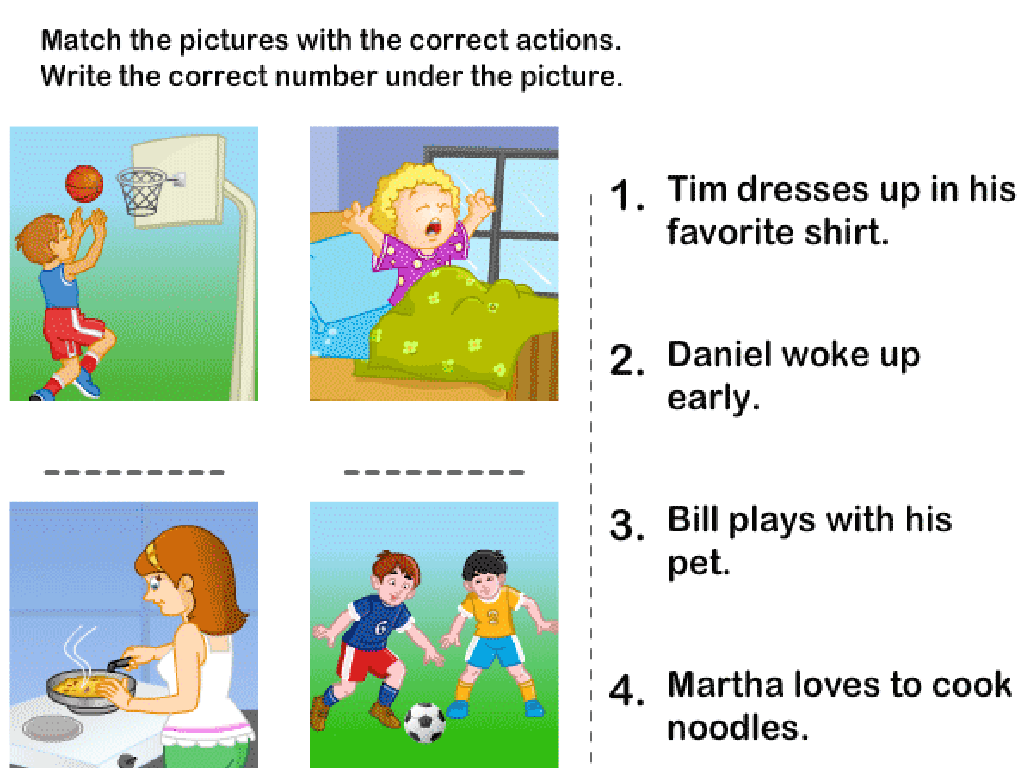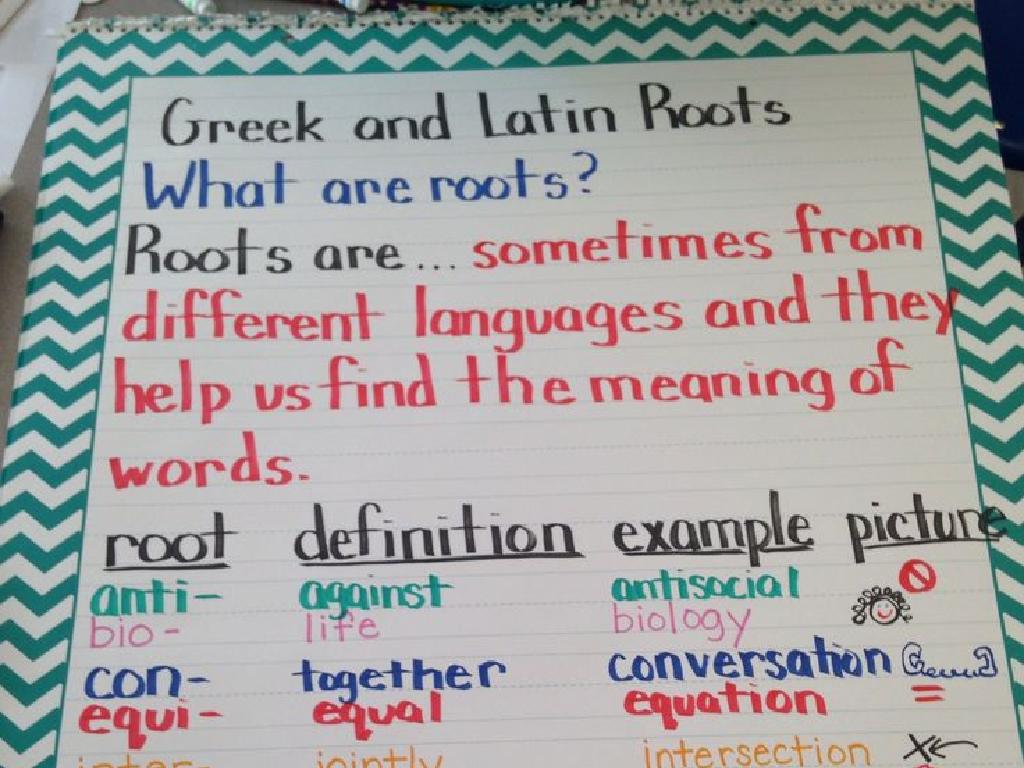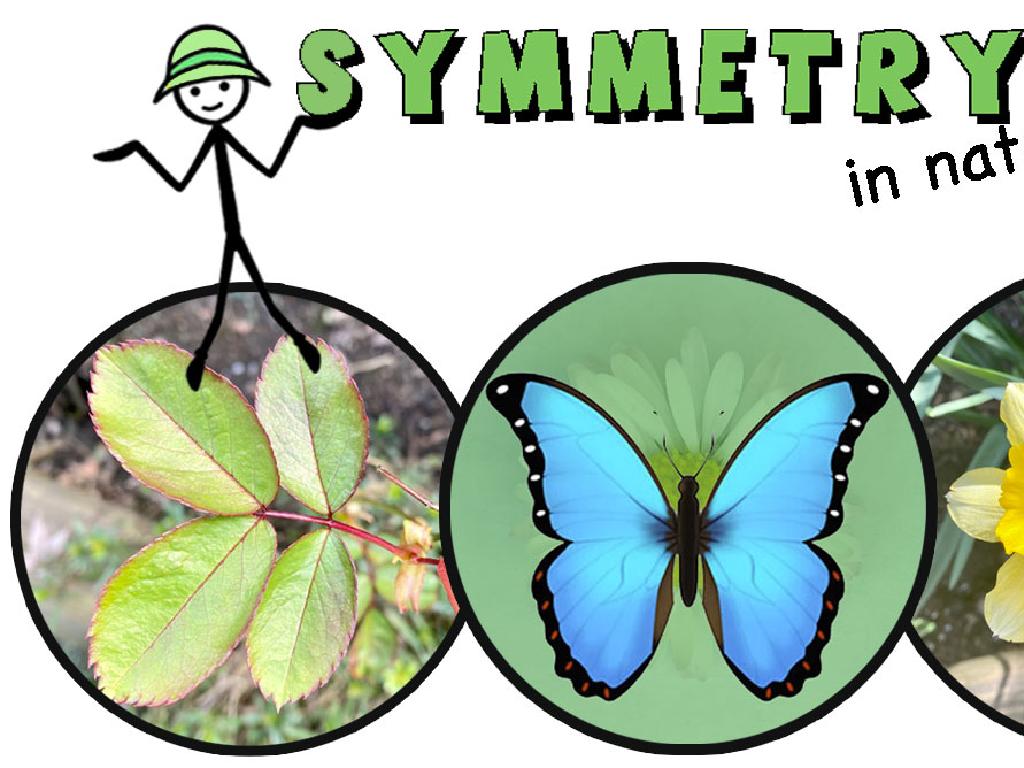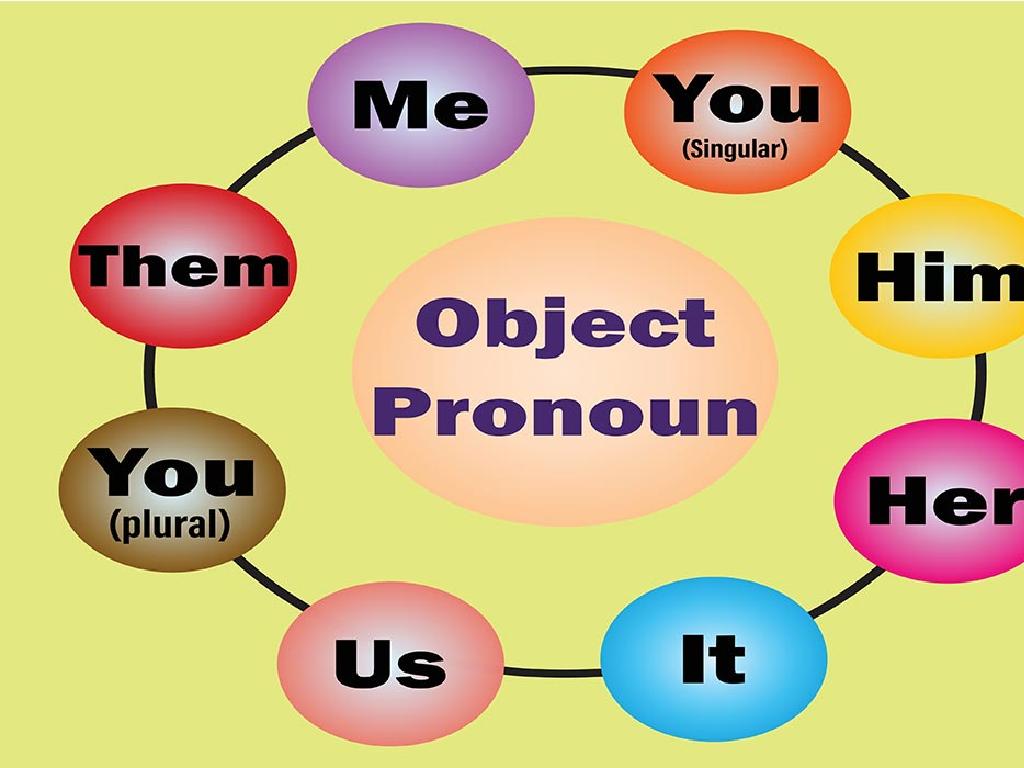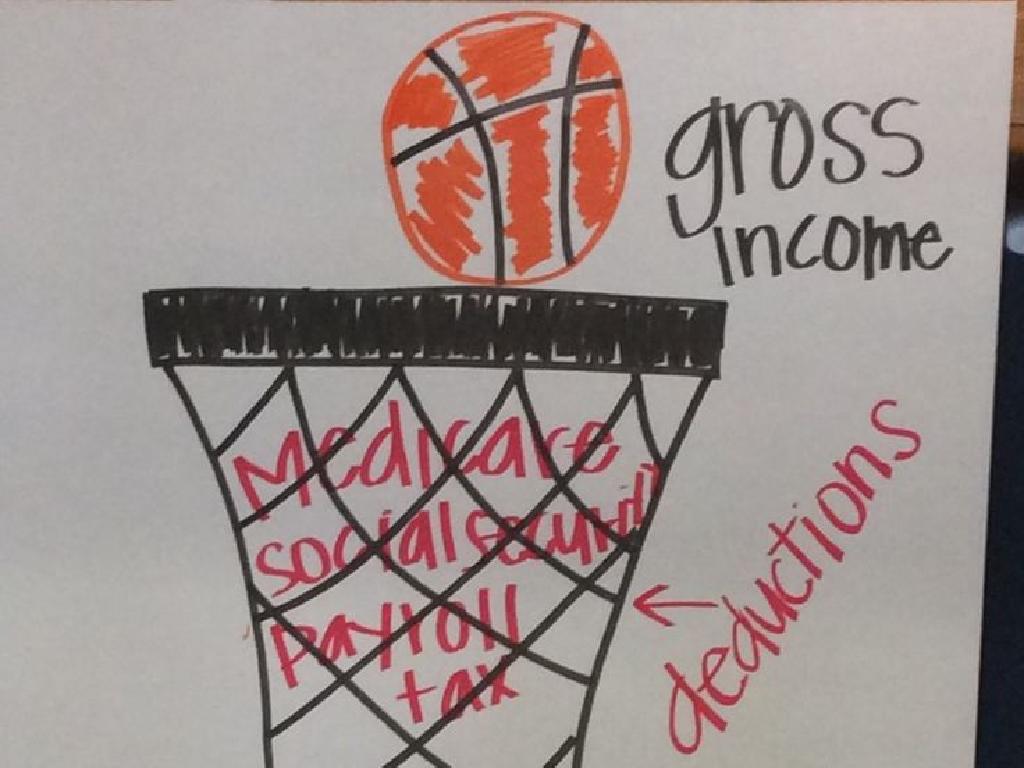Complete The Subtraction Sentence - Up To Two Digits
Subject: Math
Grade: Second grade
Topic: Subtraction: Two Digits
Please LOG IN to download the presentation. Access is available to registered users only.
View More Content
Welcome to Subtraction!
– Greet and introduce subtraction
– Define subtraction
– Taking one number away from another
– Explain importance of subtraction
– Used in everyday situations like buying toys
– Engage with examples
– Example: If you have 10 apples and eat 2, how many are left?
|
This slide is designed to welcome second-grade students to the concept of subtraction and to create a foundation for understanding this important mathematical operation. Begin with a warm greeting and an introduction to subtraction as taking away one number from another. Emphasize the real-world applications of subtraction, such as calculating change when buying something or determining how many items are left after some are taken away. Use simple, relatable examples to illustrate the concept, such as subtracting the number of apples eaten from a total count. Encourage students to think of their own examples of subtraction from daily life. The goal is to make subtraction relatable and to show its relevance beyond the classroom.
Understanding Subtraction: Two-Digit Numbers
– Subtraction means ‘Taking Away’
– If you have 5 apples and eat 2, you take away 2 from 5.
– Subtraction as ‘Finding the Difference’
– How much more is 15 than 7? The difference is what you find out.
– Learn Key Terms: Minuend, Subtrahend, Difference
– Minuend is the number you start with, subtrahend is what you take away, and the difference is what’s left.
– Practice with examples
– Try 23 – 11 and 54 – 29 to see subtraction in action.
|
This slide introduces the concept of subtraction to second graders by explaining it as both ‘taking away’ and ‘finding the difference.’ Use relatable examples like apples to illustrate ‘taking away.’ For ‘finding the difference,’ use simple comparisons they understand. Introduce key terms with definitions and examples: minuend (the number from which another number is subtracted), subtrahend (the number that is to be subtracted), and difference (the result of subtraction). Provide simple two-digit subtraction problems for practice and ensure to demonstrate how to solve them step by step. Encourage students to use objects or drawings to visualize the subtraction process.
Understanding Subtraction Sentences
– Parts of a subtraction sentence
– Minuend, Subtrahend, Difference e.g., 15 – 7 = 8
– Reading subtraction sentences
– Say ’15 minus 7 equals 8′
– Examples of subtraction sentences
– 12 – 9 = 3, 20 – 5 = 15
– Practice with real examples
– Use objects like apples to visualize
|
This slide introduces the basic components of a subtraction sentence and how to read them aloud. It’s crucial for second graders to understand the terms minuend, subtrahend, and difference to build a strong foundation in subtraction. Provide clear examples on the board and encourage students to visualize the subtraction process using objects or drawings. For homework, ask students to create their own subtraction sentences using two-digit numbers and bring them to class for discussion. This will help reinforce their understanding and give them confidence in solving subtraction problems.
Subtracting One-Digit from Two-Digits
– Review one-digit subtraction
– Steps to subtract one from two digits
– Subtract ones first, if not enough, borrow from tens
– Practice examples together
– Use examples like 52 – 4 or 37 – 9
– Understand borrowing concept
– If ones in the first number are less, borrow 1 ten and add 10 ones
|
Begin with a quick review of one-digit subtraction to ensure students are comfortable with the basics. Move on to the step-by-step process of subtracting one-digit numbers from two-digit numbers, emphasizing the concept of borrowing when necessary. Work through practice examples as a class, such as 52 – 4 or 37 – 9, to demonstrate the process. Explain borrowing: if the ones place in the first number is smaller than the one being subtracted, they need to borrow 1 from the tens place. This slide aims to solidify the students’ understanding of the subtraction process involving two-digit and one-digit numbers, preparing them for more complex problems.
Mastering Two-Digit Subtraction
– Learn two-digit subtraction
– Steps to subtract two-digit numbers
– Stack numbers, subtract ones, then tens
– Let’s practice together!
– Example: 54 – 29, start with 4 – 9, then 50 – 20
– Solve subtraction problems
|
This slide introduces students to the concept of subtracting two-digit numbers. Begin by explaining that two-digit subtraction is similar to single-digit subtraction but involves numbers with tens and ones. Demonstrate the step-by-step process: write the numbers in a column, subtract the ones first, and then the tens, borrowing if necessary. Engage the class with practice examples, writing them on the board and solving them together. Encourage students to ask questions if they’re confused. For homework, assign several two-digit subtraction problems for additional practice. This will help solidify their understanding of the concept.
Understanding Regrouping in Subtraction
– What is regrouping?
– Regrouping is borrowing from the next place value
– When to regroup numbers
– Regroup when the top digit is smaller than the bottom digit
– Examples of simple regrouping
– 52 – 29: Borrow from the tens to subtract from the ones
– Practice regrouping together
– Let’s try regrouping with a few problems in class
|
This slide introduces the concept of regrouping, an essential skill in multi-digit subtraction. Regrouping, often referred to as ‘borrowing,’ is necessary when the digit in the subtrahend is larger than the corresponding digit in the minuend. Start with simple examples, such as subtracting one-digit from two-digit numbers, to illustrate when and how to regroup. Provide clear, step-by-step guidance on the process of regrouping, and ensure to include visual aids like number lines or base-ten blocks if possible. Encourage students to practice with provided examples and prepare to assist them as they work through the problems. The goal is for students to become comfortable with regrouping to solve subtraction problems up to two digits.
Practice Time: Subtraction Together!
– Let’s solve subtraction problems
– Work on problems as a class
– We’ll tackle a few examples on the board together
– Explain your thinking process
– Share how you figured out the answer
– Encourage each other’s efforts
– Cheer on your classmates as they try too
|
This slide is designed to engage the whole class in a collaborative subtraction exercise. Start by presenting a few two-digit subtraction problems on the board and invite students to solve them together. Encourage students to volunteer to explain their thinking as they work through the problems, fostering a supportive environment where effort is recognized. This activity not only reinforces their subtraction skills but also develops their ability to articulate mathematical reasoning. As the teacher, guide the discussion, correct misconceptions, and provide positive feedback to build confidence. Prepare a variety of problems with different levels of difficulty to cater to all students.
Subtraction Game Time!
– Engage in an interactive subtraction game
– Pair up or form small teams
– Use subtraction skills in play
– Apply two-digit subtraction in game scenarios
– Enjoy learning with fun!
|
This slide introduces an interactive subtraction game designed to reinforce students’ understanding of two-digit subtraction in a collaborative and enjoyable manner. Organize the class into pairs or small groups to foster teamwork and communication. Provide clear instructions for the game, ensuring it is appropriate for second graders and focuses on subtracting numbers up to two digits. As students play, they should apply the subtraction methods learned in class. Monitor the groups to offer guidance and ensure everyone is participating. Possible activities include: subtraction bingo, ‘race to zero’ with dice, ‘subtraction war’ with cards, and a scavenger hunt with subtraction problems to solve. The goal is to create a dynamic learning environment where students can practice their math skills while having fun.
Class Activity: Subtraction Scavenger Hunt
– Find classroom objects to subtract
– Write your own subtraction sentences
– Example: If you find 5 pencils and 2 erasers, write: 5 – 2 = ?
– Solve the subtraction problems
– Use your math skills to find the answer
– Share findings with the class
|
This interactive activity is designed to help students apply their subtraction skills in a fun and engaging way. Students will search the classroom for items they can use to create subtraction sentences. They should write these sentences down and solve them independently. Encourage creativity in finding objects to subtract and forming their sentences. After solving, students will have the opportunity to present their findings to the class, fostering a collaborative learning environment. For the teacher: Prepare a list of suggested items for subtraction in case some students struggle to find objects. Monitor the students as they work, offering help with forming and solving their subtraction sentences. Have a discussion afterward about the different subtraction sentences students created and how they solved them.
Wrapping Up: Subtraction Success!
– Review of subtraction concepts
– Homework: Practice worksheet
– Complete the worksheet with 10 subtraction problems
– Celebrate learning progress
– Praise for hard work and improvement
– Keep practicing at home!
– Try more problems to become a subtraction star!
|
As we conclude today’s lesson on two-digit subtraction, it’s important to recap the main points to reinforce the students’ understanding. For homework, assign a worksheet with 10 subtraction problems to provide additional practice. Offer encouragement and positive reinforcement to motivate the students, highlighting their progress and achievements. Remind them that practice is key to mastering subtraction, and encourage them to try more problems at home. The goal is to build their confidence and ensure they feel supported in their learning journey.

